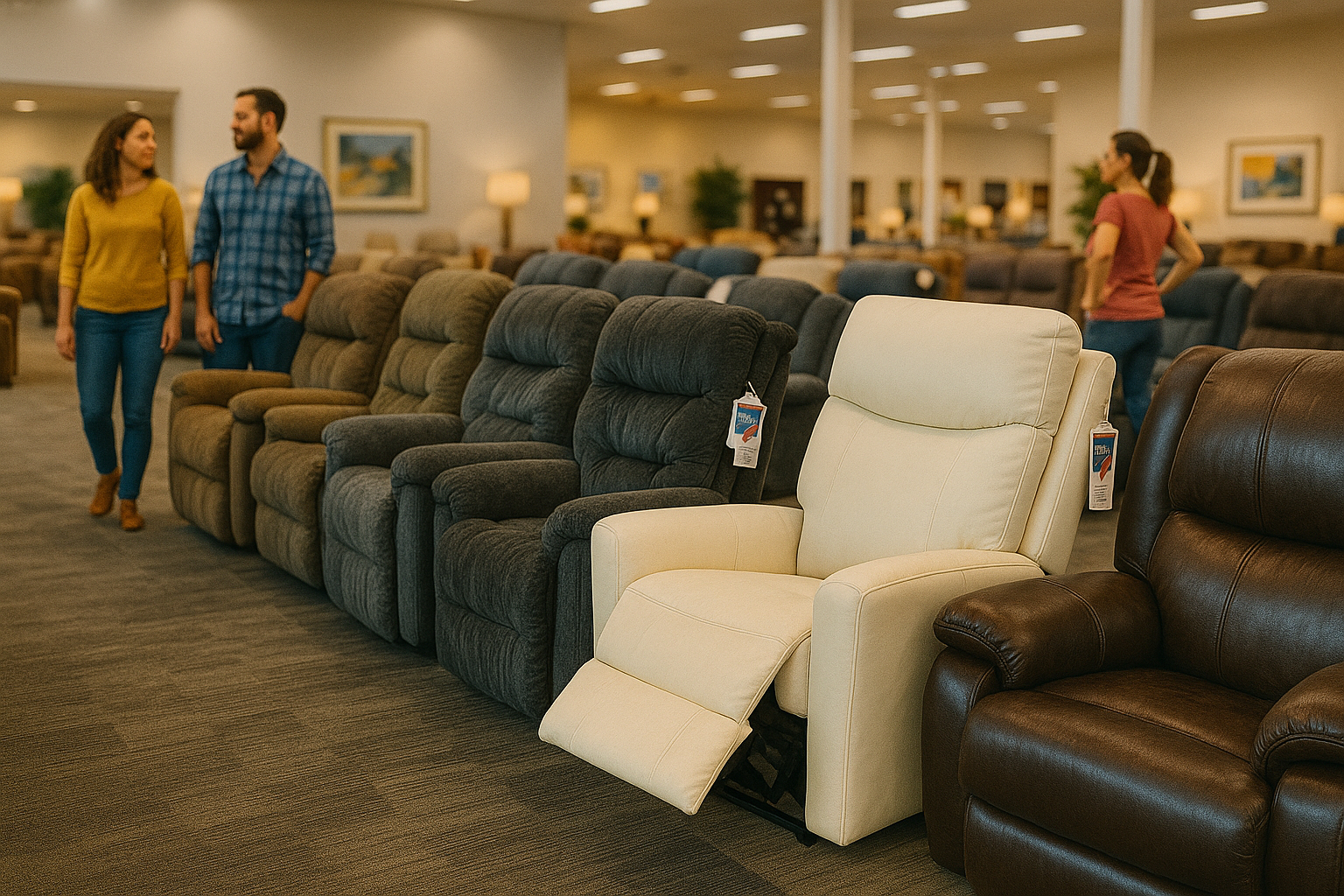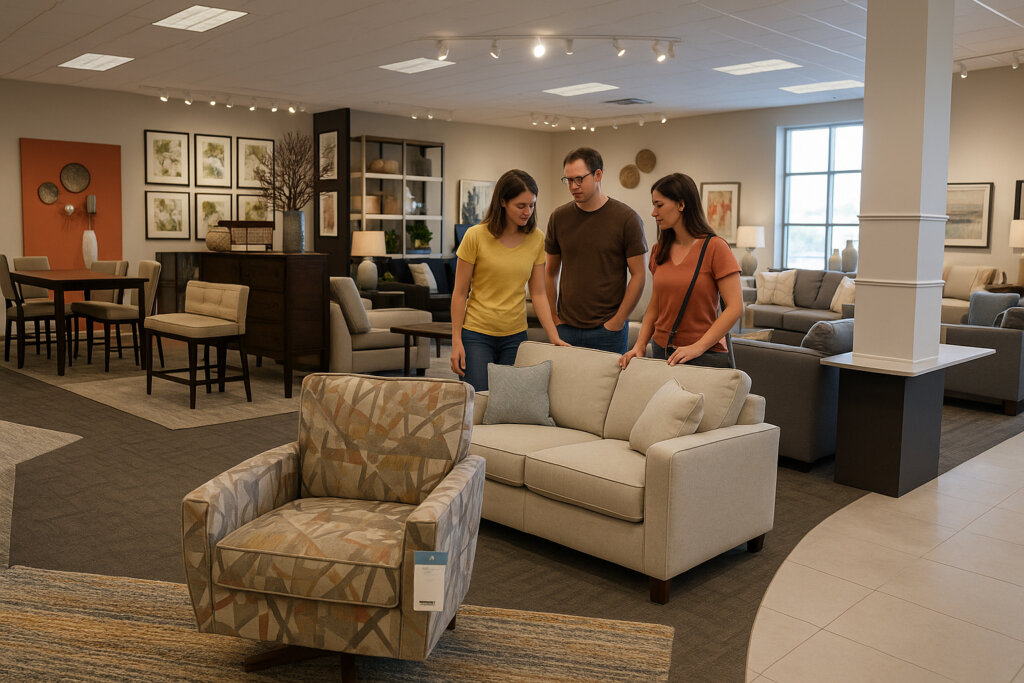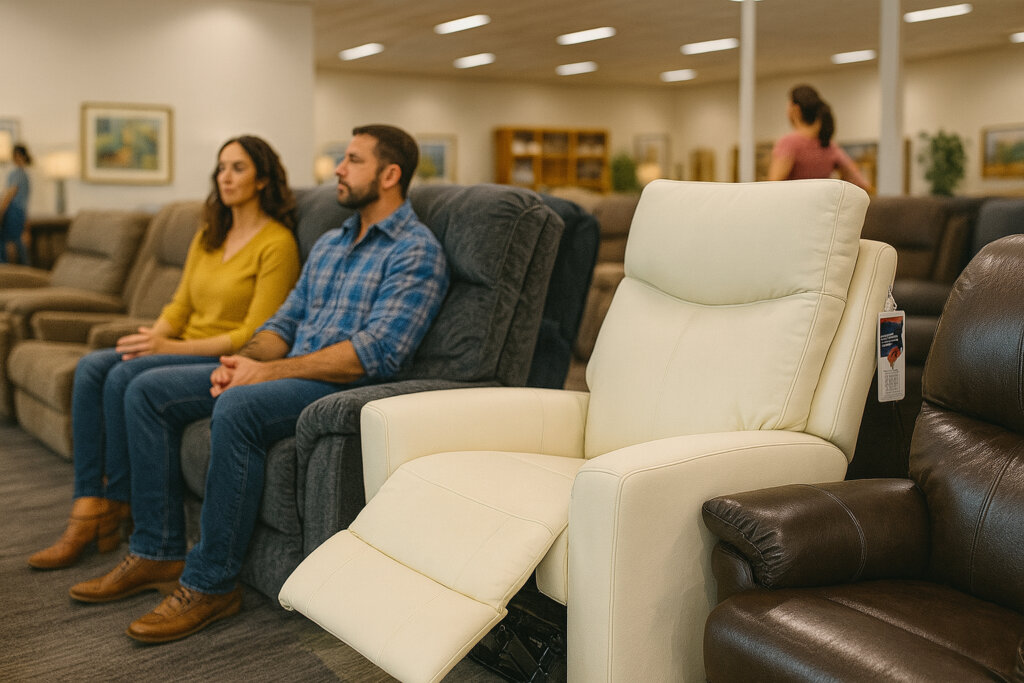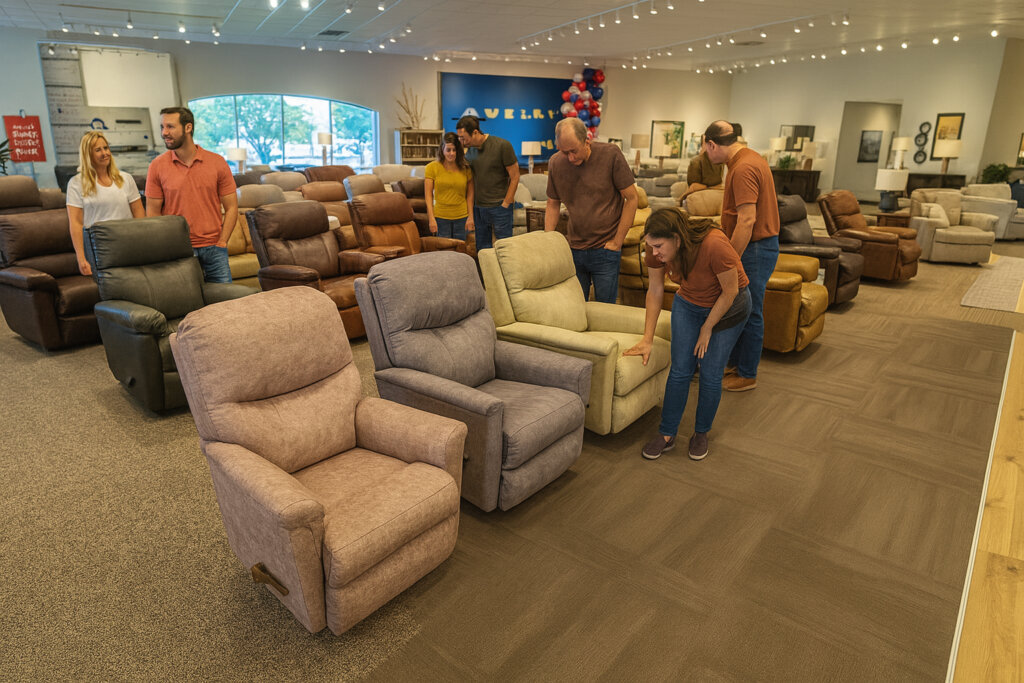
Case Study
Optimizing Furniture Store Design with Eye-Tracking Research
overview
A national furniture retailer sought to modernize its brand and enhance the in-store experience by introducing a new concept store in a densely populated urban neighborhood. This location departed from the brand’s traditional suburban format, offering a smaller footprint and a more curated, lifestyle-driven presentation. The store featured distinct thematic zones, a reimagined furniture display, and a refreshed brand identity. Our research team collaborated with the client to assess how this new format resonated with shoppers and determine whether it could serve as a scalable model for future locations.
THE PROBLEM
Shifting Shopper Perceptions and Evaluating Concept Viability
As the brand evolved to meet the expectations of a younger, more design-conscious audience, it recognized the need to shift perceptions beyond its legacy product associations. The new concept store was designed to bring this transformation to life—through immersive lifestyle zones, a more editorial merchandising approach, and a modernized brand identity.
However, the client needed to understand whether this new format would:
- Deliver a more engaging and emotionally resonant customer experience.
- Reposition the brand to reflect a bold shift from dated styles to modern design, inviting shoppers to discover a contemporary living experience. Drive stronger engagement, conversion, and brand advocacy.
- Align with key strategic pillars, including customer experience and brand equity.
- Provide a replicable model for future urban locations.
The research also aimed to identify which zones resonated most with shoppers, how the new layout influenced navigation and dwell time, and whether the curated furniture presentation improved product discovery and decision-making.

OUR APPROACH
In-Store Qualitative Research with Eye-Tracking Tool
C+R designed a custom qualitative research program to explore shopper reactions in real time. The approach included:
- In-store intercepts to capture immediate impressions and emotional responses.
- Pre-recruited shop-alongs to observe natural navigation, zone engagement, and decision-making behaviors.
- Eye-tracking technology to measure visual attention and dwell time across key areas of the store.
The research focused on evaluating the overall experience, identifying high-impact zones, and assessing alignment with the brand’s strategic pillars. Special attention was given to how the new layout, signage, and merchandising influenced shopper behavior and brand perceptions.

The result
Behavioral Shifts and Brand Perception Gains
The research delivered actionable insights that guided future store planning and concept refinement.:
- Perception Shift: The new concept succeeded in moving shopper perceptions toward a more modern and style-conscious brand identity while preserving the brand tradition people cherish.
- Lifestyle Appeal: Certain thematic areas within the store—characterized by minimalist styling and contemporary design elements—resonated more strongly with shoppers seeking a modern, approachable furniture destination.
- Navigation Learnings: While shoppers appreciated the lifestyle-driven layout, some aspects of product discovery were hindered—highlighting opportunities for simplification and better wayfinding.
- Engagement Drivers: Realistic room setups, open sightlines, and low-pressure sales environments encouraged exploration and linger time—key factors for enhancing the in-store experience.
- Visual Attention Insights: Eye-tracking highlighted certain elements in the store layout that naturally caught shopper interest, while others were less impactful and often overlooked.
These findings helped the client refine both the current concept and future iterations, ensuring the store environment would continue to build brand relevance and shopper engagement in evolving retail spaces.


proven experience
related case studies
